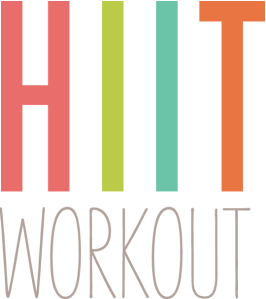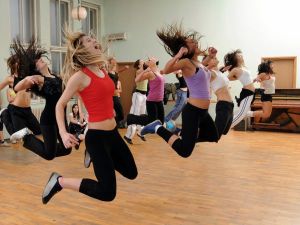http://bcove.me/a7i3qveb
HSBC Holdings PLC will eliminate as many as 50,000 jobs through 2017 by shrinking its global reach as Chief Executive Officer Stuart Gulliver seeks to cut annual costs by about $5-billion (U.S.) to restore profit growth.
Europe’s largest bank plans to reduce full-time employees by 22,000 to 25,000, or about 10 per cent, it said in a presentation to investors on its website on Tuesday. A further 25,000 positions will be cut through the sale of its Turkey and Brazil operations. The bank left its target for return on equity, a measure of profitability, at more than 10 per cent.
Gulliver, 56, is looking to restore investor confidence in a bank battered by a series of scandals and surging compliance costs. Since taking over in 2011, he’s announced more than 87,000 jobs cuts, exited about 78 businesses and reduced the number of countries the bank operates by 15 to 73.
“HSBC is a big bank to move and they’re definitely moving in the right direction,” said Chris White, who helps oversee about 3.9 billion pounds ($6-billion), including HSBC shares, at Premier Fund Managers Ltd. in Guildford, England. “A lot of it feels like it was broadly as expected.”
The shares were little changed at 619.6 pence at 9:30 a.m. in London. They are up about 1.9 per cent this year, trailing a 6.9 per cent gain at Standard Chartered PLC, the other U.K. bank generating most of its earnings in Asia.
U.K. Cuts
Just months after taking over, Gulliver announced some 30,000 jobs cuts to trim costs by as much as $2.5-billion. In the latest round, as many as 21,000 of the cuts will be lost in a push for digital banking, automation and branch closures. In the U.K., up to 8,000 jobs will be cut, Gulliver said.
Under his plan, the CEO plans to cut risk-weighted assets by about $290-billion, including a reduction at the securities division to less than one-third of the group’s RWAs, and target a return on equity of more than 10 per cent by 2017. The bank cut its ROE target to 10 per cent in February from as much as 15 per cent. In 2014, it had an ROE of 7.3 per cent.
At the investment bank, HSBC plans to cut RWAs by a net $130-billion, or 31 per cent, while “keeping costs flat.” The global banking and markets division had a 6 per cent profit gain in the first quarter, as revenue from foreign-exchange rose.
Asia Focus
The savings program will cost $4-billion to $4.5-billion through 2017, according to the statement.
“We recognize that the world has changed and we need to change with it,” Gulliver said in the statement. “I’m confident that our actions will allow us to capture expected future growth opportunities and deliver further value to shareholders.”
HSBC, founded 150 years ago in Hong Kong, will also sell operations in Turkey and Brazil, while stepping up investment in Asia, expanding asset management and insurance and focusing on places including China’s Pearl River Delta and areas including the internationalization of the yuan.
Jonathan Tyce, a senior banks analyst at Bloomberg Intelligence, said that while it’s a “good cost number,” the short list of disposals “may have surprised a little.”
“Margins are higher” in Asia,” Tyce said in an interview on Bloomberg Television from London on Tuesday. “Everybody’s all over Asia. This is all about improving capital efficiency. You can completely understand the motivation.”
HSBC Fines
With his strategy update, Gulliver is seeking to convince investors that he’s the right man to lead HSBC. At Deutsche Bank AG, Germany’s largest lender, co-CEO Anshu Jain announced his resignation on Sunday, just two months after presenting a strategic update that investors considered too weak.
“Gulliver is not an idiot,” said Chris Wheeler, an analyst at Atlantic Equities in London. “This is quite the opposite to Deutsche Bank as there is tonnes of granularity of where the cost cutting will come, how they’re achieving it and why they’re getting out of countries.”
HSBC has come under pressure to reduce costs and reverse a decline in profit after a year that saw the bank being fined for manipulating currency markets and embroiled in a tax-avoidance scandal in Switzerland.
The bank last week agreed to pay 40 million Swiss francs ($43-million) to close an investigation by Geneva prosecutors into allegations of money laundering at its Swiss private bank.
‘Extreme Solutions’
In February, Gulliver pledged that underperforming units would face “extreme solutions” after full-year earnings fell 17 per cent and the lender scrapped four-year-old profitability targets, citing a tougher regulatory environment.
HSBC is among the hardest hit by regulator scrutiny, with the Bank of England forcing the largest lenders to separate their consumer from riskier investment banking activities by 2019. It’s also been hurt by an increasing bank levy, costing lenders about 5.3 billion pounds over the next five years.
The bank said earlier this year that it’s reviewing whether to re-domicile from London because of rising tax and regulatory costs. It will complete its headquarters review by the end of 2015, according to the statement.
“It would be a mistake that HSBC flees the country,” Bill Blain, a strategist at Mint Partners, said in an interview with Jonathan Ferro on Bloomberg Television on Tuesday. “This is actually a pretty good place for banks to be.”
Source: Blomberg News
HSBC to cut 50,000 jobs, slash investment bank and shrink risk by $290 billion
HONG KONG/LONDON: HSBC will shed almost 50,000 jobs and take an axe to its investment bank, cutting the assets of Europe's biggest lender by a quarter in a bid to simplify and improve its sluggish performance.
 HSBC said it will shrink global banking and markets division to less than one third of HSBC's $2.6 tn balance sheet from its current level of 40%.
HSBC said it will shrink global banking and markets division to less than one third of HSBC's $2.6 tn balance sheet from its current level of 40%. The cuts will leave HSBC with about 208,000 full-time equivalent staff by 2017, down from 295,000 at the end of 2010 and 258,000 at the end of 2014, although the bank said it will be hiring in growth businesses and its compliance division.
The cuts are part of a second attempt by Chief Executive Stuart Gulliver to boost profits since he took the helm at the start of 2011. The previous effort was foiled by high compliance costs, fines, low interest rates and sluggish growth.
"Slaughtering the staff is not necessarily the solution unless management makes the bank considerably less complex," said James Antos, analyst at Mizuho Securities Asia.
HSBC shares in London opened 0.9 per cent higher at 625 pence before slipping back to underperform both the FTSE 100 index and European banking stocks slightly.
HSBC said it will cut its assets on a risk adjusted basis (RWA) by $290 billion by 2017. That will include a reduction of a third, or $140 billion, in global banking and markets (GBM), its investment bank. That means GBM will account for less than a third of HSBC's balance sheet, down from 40 per cent now.
Investors had been calling for more radical cuts at the investment bank, which Gulliver ran for five years but where returns have suffered in tough market conditions.
"The cuts provide significant headroom for the group to fund asset growth in Asia and absorb RWA inflation, whilst protecting its ability to pay a progressive dividend," said Gurpreet Singh Sahi, analyst at Goldman Sachs.
COST SAVINGS
The bank lowered its target for return on equity to greater than 10 per cent by 2017, down from a previous target of 12-15 per cent by 2016. Gulliver said he will push through annual cost savings of up to $5 billion by 2017. It will cost up to $4.5 billion in the next three years to achieve the savings.
HSBC confirmed the planned sale of its businesses in Turkey and Brazil, adding it would keep a presence in the latter to serve corporate clients. It aims to overhaul underperforming businesses in Mexico and the United States to improve returns.
The bank said it was also targeting growth in Asia by expanding its insurance business and its presence in China's Pearl River Delta region.
Some analysts said the changes did not go as far as hoped, though others said the asset reduction plan was a substantial shift.
"The market is likely to respond positively on the move with investors having a much clearer idea of HSBC's direction going forward," said Steven Leung, a sales director at UOB Kay Hian in Hong Kong.
The bank also set out 11 criteria it will use to evaluate whether to move its headquarters from London to Asia, likely Hong Kong. They include factors such as economic growth, the tax system, government support for the growth of the banking system, long-term stability and an ability to attract good staff.
HSBC said it would complete the review of the possible move by the end of the year.
The bank also has to separate its British retail banking operation, which is to be based in Birmingham in central England. The "ring-fenced" bank will account for about two thirds of UK revenues, or $11 billion, and will have some 26,000 staff, or 57 per cent of the total in the United Kingdom. - Reuters








